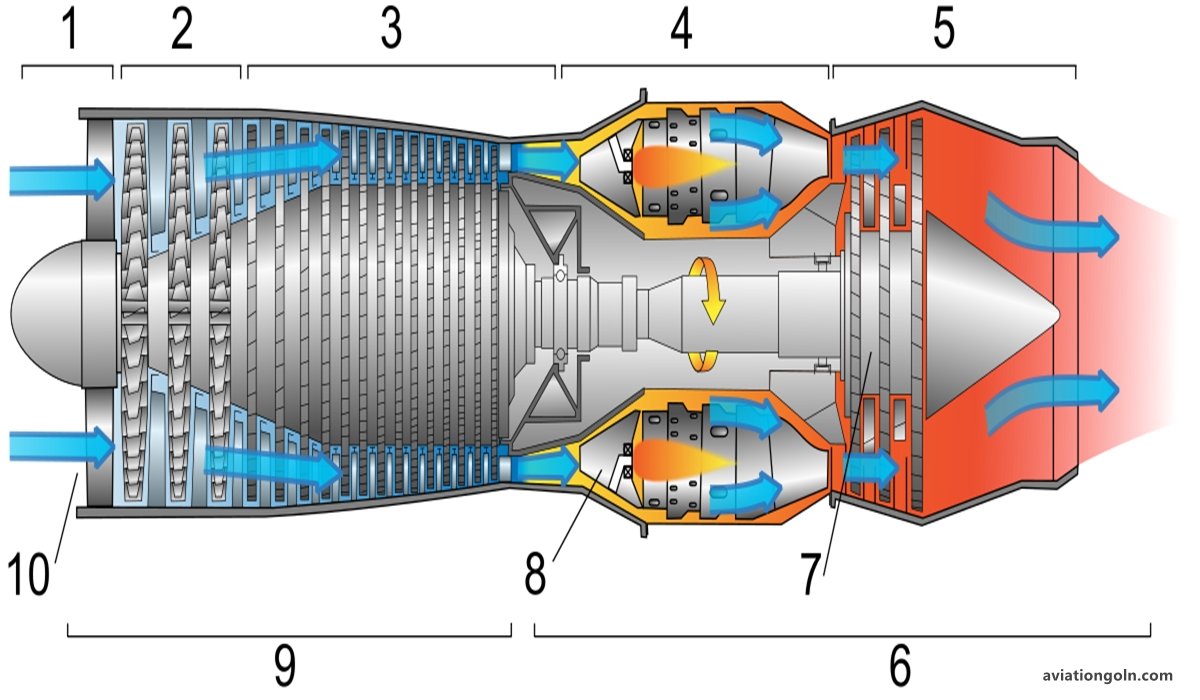Commercial Jet Airliners: The dawn of commercial aviation transformed the world by bringing countries, cultures, and economies closer than ever before. Among the most iconic symbols of this revolution are commercial jet airliners, the large aircraft that shuttle passengers and cargo across continents and oceans in mere hours. This article delves deep into the world of these magnificent flying machines, tracing their evolution, types, and the science that allows them to soar.
Commercial Jet Airliners: Flying the World to New Horizons

1. History and Evolution
1.1 The Dawn of the Jet Age The age of commercial jet airliners began post-World War II. With the end of the war, military jet technology started finding its way into civil aviation. The British de Havilland Comet, which took to the skies in 1952, is recognized as the world’s first commercial jetliner. However, its early years were marred by accidents due to structural issues.
The Boeing 707, which began service in 1958, became the true catalyst for the jet age. Its success heralded the decline of propeller-driven airliners in favor of faster, smoother, and more efficient jet airliners.
1.2 Evolution Over the Years From the pioneering Boeing 707, the industry saw the rise of various aircraft models like the Douglas DC-8 and the Boeing 727. The 1970s introduced wide-bodied jets like the Boeing 747 “Jumbo Jet”, which transformed long-haul travel. In subsequent years, models such as the Airbus A300, the world’s first twin-engined widebody, and the efficient Boeing 777, known for its long-range capabilities, made their debut.
In the 21st century, technological advancements led to the development of aircraft with even greater efficiencies, lower emissions, and advanced passenger comfort features. The Boeing 787 ‘Dreamliner’ and the Airbus A350 are notable examples.

2. Types of Commercial Jet Airliners
2.1 Narrow-body or Single-aisle Airliners These are typically used for short to medium-haul flights. They usually seat between 100 to 240 passengers. Examples include the Airbus A320 family and the Boeing 737 series.
2.2 Wide-body or Twin-aisle Airliners Optimized for long-haul routes, they can accommodate 200 to 850 passengers. Their larger fuselage diameter allows for a twin-aisle configuration, hence the name. Examples include the Boeing 747, 777, 787, Airbus A330, A350, and A380.
2.3 Regional Jets Smaller than narrow-body jets, regional jets serve shorter routes and typically seat 20 to 100 passengers. The Embraer E-Jet and Bombardier CRJ series are examples.

3. The Science Behind Flying
3.1 Principles of Flight The magic behind these metal birds’ ability to fly lies in fundamental aerodynamic principles. Lift, generated by the wings, counteracts the weight of the aircraft. Engines provide thrust to move the plane forward, overcoming drag, the resistive force acting against the motion.

3.2 Engines Most commercial jet airliners use turbofan engines. These engines suck in air, compress it, mix it with fuel, and then ignite it. The resulting explosion propels the aircraft forward. The ‘fan’ in a turbofan helps in moving more air around the outside of the engine, providing additional thrust.
3.3 Innovations in Materials Modern airliners benefit from advanced materials. Composite materials, which are lighter and stronger than traditional aluminum, are increasingly used in aircraft construction. This leads to fuel efficiency and reduced emissions.

4. Environmental Considerations
4.1 Carbon Emissions Air travel contributes significantly to global carbon emissions. With growing environmental concerns, the aviation industry has been pushing for more fuel-efficient aircraft and exploring sustainable fuel options.
4.2 Sustainable Aviation Fuel (SAF) SAFs are non-fossil-based aviation fuels. Produced from sustainable resources, they can be blended with conventional jet fuel. When burned, SAFs reduce the overall carbon footprint of the flight.

5. The Passenger Experience
5.1 Cabin Innovations Modern jetliners offer advanced cabin features. From mood lighting to larger windows, noise-reducing technologies to improved air circulation systems, the focus is on enhancing passenger comfort.
5.2 In-flight Entertainment and Connectivity In-flight entertainment systems have come a long way. Modern systems offer vast libraries of movies, music, and games. Furthermore, with the advent of in-flight Wi-Fi, passengers can stay connected even at 35,000 feet.

6. Safety and Regulations
6.1 Regulatory Bodies Organizations like the Federal Aviation Administration (FAA) in the U.S. and the European Union Aviation Safety Agency (EASA) in Europe ensure that commercial jet airliners adhere to stringent safety standards.
6.2 Safety Features From advanced navigation systems to automated flight controls, commercial jet airliners are equipped with numerous safety features. Furthermore, rigorous pilot training and regular aircraft maintenance further ensure passenger safety.

7. The Future of Commercial Jet Airliners
7.1 Electric and Hybrid Propulsion To further reduce emissions, research is underway on electric and hybrid propulsion systems. Though challenges remain, particularly related to battery weight and power, the future might see smaller regional aircraft going electric.
7.2 Supersonic Travel Companies are revisiting the realm of supersonic travel, aiming to develop aircraft that can fly faster than the speed of sound. If successful, we might see commercial flights significantly reducing travel times.
7.3 Urban Air Mobility (UAM) The congestion of modern cities has prompted the exploration of the skies for short intra-city travel. Urban air mobility envisions a future where small aircraft transport people within cities, radically changing the concept of urban transportation.

Commercial jet airliners have not only revolutionized global travel but have also been a testament to human engineering and innovation. As we stand on the cusp of further advancements, from sustainable fuels to electric propulsion, it’s an exciting era for commercial aviation. What remains constant is the industry’s commitment to safety, efficiency, and enhancing the passenger experience. The journey of these magnificent flying machines, from the first commercial jets to the modern marvels of engineering, is a testament to humanity’s drive to explore, connect, and innovate.
Read more:
